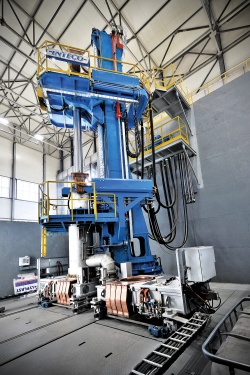How Titanium is made

Since the 1950‘s,when titanium came into use primarily in the aerospace sector due to its exceptional properties, the titanium industry has had several cycles of high and low demand with numerous new applications and industries over the years. Today, about 80% of titanium is used by the aerospace industry and 20% by non-aerospace industries such as metal finishing, chemical processing, consumer products and medical implants. The conversion of purified titanium sponge into commercially pure titanium or titanium alloys involves several processes with multiple processing steps and can nowadays be realized via two independent production routes.

In the VAR or sponge route, titanium sponge is mixed with various alloy additions in a dedicated weighing and blending unit, whereby the exact proportion of sponge to alloy material has to be carefully formulated and controlled. This mixture is then pressed into compacts and welded together in a vacuum plasma welding process forming a sponge electrode. This electrode is then subsequently remelted vertically into a water-cooled copper crucible under inert conditions in a Vacuum Arc Remelting process. This remelting process is normally carried out two to three times with intermediate machining to ensure uniform distribution of alloying elements to provide a technically acceptable ingot suitable for subsequent processing such as hot and cold deformation into mill products such as bar, billet, wire, tubing, plate and sheet by conventional forging and rolling processes.